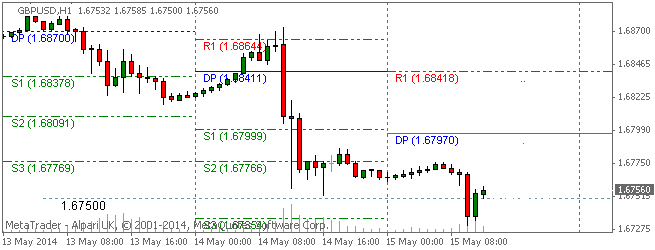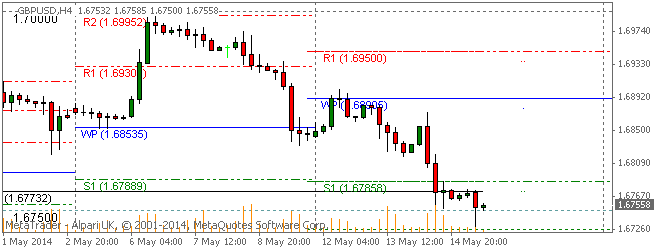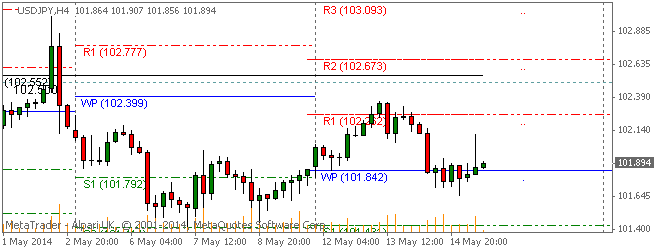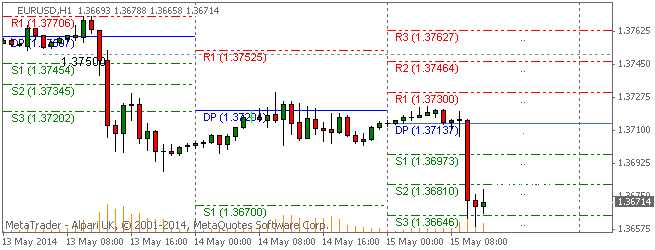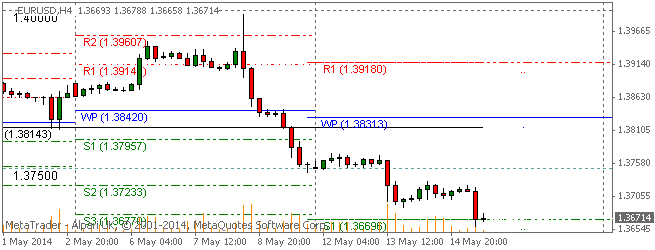Source: JT Long of The Energy Report (5/15/14)
Oppenheimer & Co. Managing Director and Senior Energy Analyst Fadel Gheit knows how to thwart Russia’s aggressive tendencies and encourage domestic oil and gas production: Lift the ban on oil exports. In the absence of a strategic U.S. energy policy, some companies will do better than others. In this interview with The Energy Report, conducted during earnings season, Gheit shares some of his insights on which companies have catalysts with bottom-line impacts.
The Energy Report : We recently interviewed Matt Badiali and he talked about what a boon the conflict in Ukraine has been for U.S. refineries. Are you seeing the same effect? What about opportunities in Europe as countries try to diversify away from dependence on Russian oil and gas?
Fadel Gheit: U.S. refiners benefit from the wide Brent/WTI discount. The Russian invasion of Ukraine has increased global tension, boosted Brent prices and widened the differential. With this cost advantage, U.S. refiners are able to significantly increase refined product exports, mainly to Latin America and Europe, which tightened U.S. supplies and boosted margins, despite flat demand.
Unfortunately, the U.S. does not have an energy policy, and we still have a ban on exporting crude oil, which has been in effect for 40 years. Even with the Russian invasion, we seem paralyzed, confused and unable to respond to Russia’s aggression. Lifting the export ban and supplying Europe with oil and refined products would reduce dependence on Russian oil and lower global oil prices, which in turn would hurt Russian exports and boost the economies of the U.S. and Europe.
TER: In your last interview, you talked about the impact of instability in the Middle East on companies likeApache Corp. (APA:NYSE). Do you see the situation stabilizing there? Are you more comfortable with companies operating in Egypt and Turkey?
FG: I believe the Middle East will remain volatile and unstable—not an attractive business environment. Apache sold 30% of its interests in Egypt to Sinopec, which is a step in the right direction. The sooner Apache exits Egypt and uses the proceeds to buy back stock, reduce debt and increase investment onshore in the U.S., the better off the shareholders will be. Why invest in Egypt or Turkey when you have the huge energy resources we have in the U.S.?
TER: You also said natural gas prices in North America are severely depressed compared to the rest of the world. You called that a good thing because it would result in a second industrial renaissance. Are you still bullish on the prospects for natural gas as an economic engine for the U.S.?
FG: Low natural gas prices are good for the consumer and drive U.S. manufacturing. But I also believe in free trade, and the U.S. government should allow LNG exports to higher-price markets, mainly in the Far East and Europe. If we had built large LNG export terminals, we could have significantly reduced Europe’s dependence on Russian gas.
TER: What companies are benefitting from the fracking boom?
FG: Domestic oil and gas producers, as well as oil service companies. Infrastructure and transportation companies are also joining the party, despite regulatory hurdles.
TER: How are the large, integrated oil companies faring in the new energy environment? What catalysts are you watching during earnings season?
FG: The stocks of the large international oil companies have not performed well in the last 10 years, as they lagged all other energy sectors and the market in general. They are viewed as defensive investments, but offer no real growth. They have above-market dividend yield, but are not attractive enough for investors who favor the pure plays of refiners or oil and gas producers.
As far as individual company catalysts, Royal Dutch Shell’s (RDS.A:NYSE; RDS.B:NYSE) new CEO, Ben van Beurden, has increased the emphasis on profits, capital efficiency and returns. Lower CAPEX and increased divestments should reduce net investments. We expect Shell to generate free cash flow of over $20 billion ($20B) over the next two years. We think this is a good start and rate it a Perform.
We will be watching production growth, cost trends, capital spending and plans to return cash to shareholders in the form of dividends and share buybacks.
TER: What about the prospects for the large independent exploration and production (E&P) companies?
FG: The large E&P companies are more attractive than the integrated companies, less volatile than the refiners and more stable than the small producers. Each has a catalyst. Anadarko Petroleum Corp. (APC:NYSE) benefited from a legal settlement, Apache benefited from restructuring, and so did Hess Corp. (HES:NYSE) and Murphy Oil Corp. (MUR:NYSE). EOG Resources Inc. (EOG:NYSE) and Pioneer Natural Resources (PXD:NYSE) benefited from oil production growth, while investors are waiting for the restructuring of Occidental Petroleum Corp. (OXY:NYSE) to take place. Marathon Oil (MRO:NYSE) andDevon Energy Corp. (DVN:NYSE) have lagged, but offer the lowest valuations in the group. Cabot Oil & Gas Corp. (COG:NYSE) and Range Resources Corp. (RRC:NYSE) will continue to reflect natural gas prices and additional pipeline capacity, which have constrained production growth.
As I mentioned in a recent research report, with higher production growth than the majors, a higher dividend yield and a lower valuation than E&P peers, ConocoPhillips (COP:NYSE) offers an alternative to both groups. We raised our 12-18 month price target to $85 from $80 to reflect an improving outlook on stronger financial and operating results and rated them outperform.
TER: Thank you for your time Fadel.
FG: Thank you.
Fadel Gheit , an energy analyst since 1986, is a managing director and senior analyst covering the oil and gas sector for Oppenheimer & Co. He has been named to The Wall Street Journal All-Star Annual Analyst Survey four times and was the top-ranked energy analyst on the Bloomberg Annual Analyst Survey for four years. He is frequently quoted on energy issues and has testified before Congress about oil price speculation.
Want to read more Energy Report interviews like this? Sign up for our free e-newsletter, and you’ll learn when new articles have been published. To see a list of recent interviews with industry analysts and commentators, visit our Streetwise Interviews page.
DISCLOSURE:
1) JT Long conducted this interview for Streetwise Reports LLC, publisher of The Gold Report, The Energy Report, The Life Sciences Report and The Mining Report, and provides services to Streetwise Reports as an employee. She owns, or her family owns, shares of the following companies mentioned in this interview: None.
2) The following companies mentioned in the interview are sponsors of Streetwise Reports: Royal Dutch Shell. Streetwise Reports does not accept stock in exchange for its services.
3) Fadel Gheit: I own, or my family owns, shares of the following companies mentioned in this interview: Royal Dutch Shell Plc, Devon Energy Corp. and ConocoPhillips. I personally am, or my family is, paid by the following companies mentioned in this interview: None. My company has a financial relationship with the following companies mentioned in this interview: None. I was not paid by Streetwise Reports for participating in this interview. Comments and opinions expressed are my own comments and opinions. I had the opportunity to review the interview for accuracy as of the date of the interview and am responsible for the content of the interview.
4) Interviews are edited for clarity. Streetwise Reports does not make editorial comments or change experts’ statements without their consent.
5) The interview does not constitute investment advice. Each reader is encouraged to consult with his or her individual financial professional and any action a reader takes as a result of information presented here is his or her own responsibility. By opening this page, each reader accepts and agrees to Streetwise Reports’ terms of use and full legal disclaimer.
6) From time to time, Streetwise Reports LLC and its directors, officers, employees or members of their families, as well as persons interviewed for articles and interviews on the site, may have a long or short position in securities mentioned. Directors, officers, employees or members of their families are prohibited from making purchases and/or sales of those securities in the open market or otherwise during the up-to-four-week interval from the time of the interview until after it publishes.
Streetwise – The Energy Report is Copyright © 2014 by Streetwise Reports LLC. All rights are reserved. Streetwise Reports LLC hereby grants an unrestricted license to use or disseminate this copyrighted material (i) only in whole (and always including this disclaimer), but (ii) never in part.
Streetwise Reports LLC does not guarantee the accuracy or thoroughness of the information reported.
Streetwise Reports LLC receives a fee from companies that are listed on the home page in the In This Issue section. Their sponsor pages may be considered advertising for the purposes of 18 U.S.C. 1734.
Participating companies provide the logos used in The Energy Report. These logos are trademarks and are the property of the individual companies.
101 Second St., Suite 110
Petaluma, CA 94952
Tel.: (707) 981-8204
Fax: (707) 981-8998
Email: [email protected]




